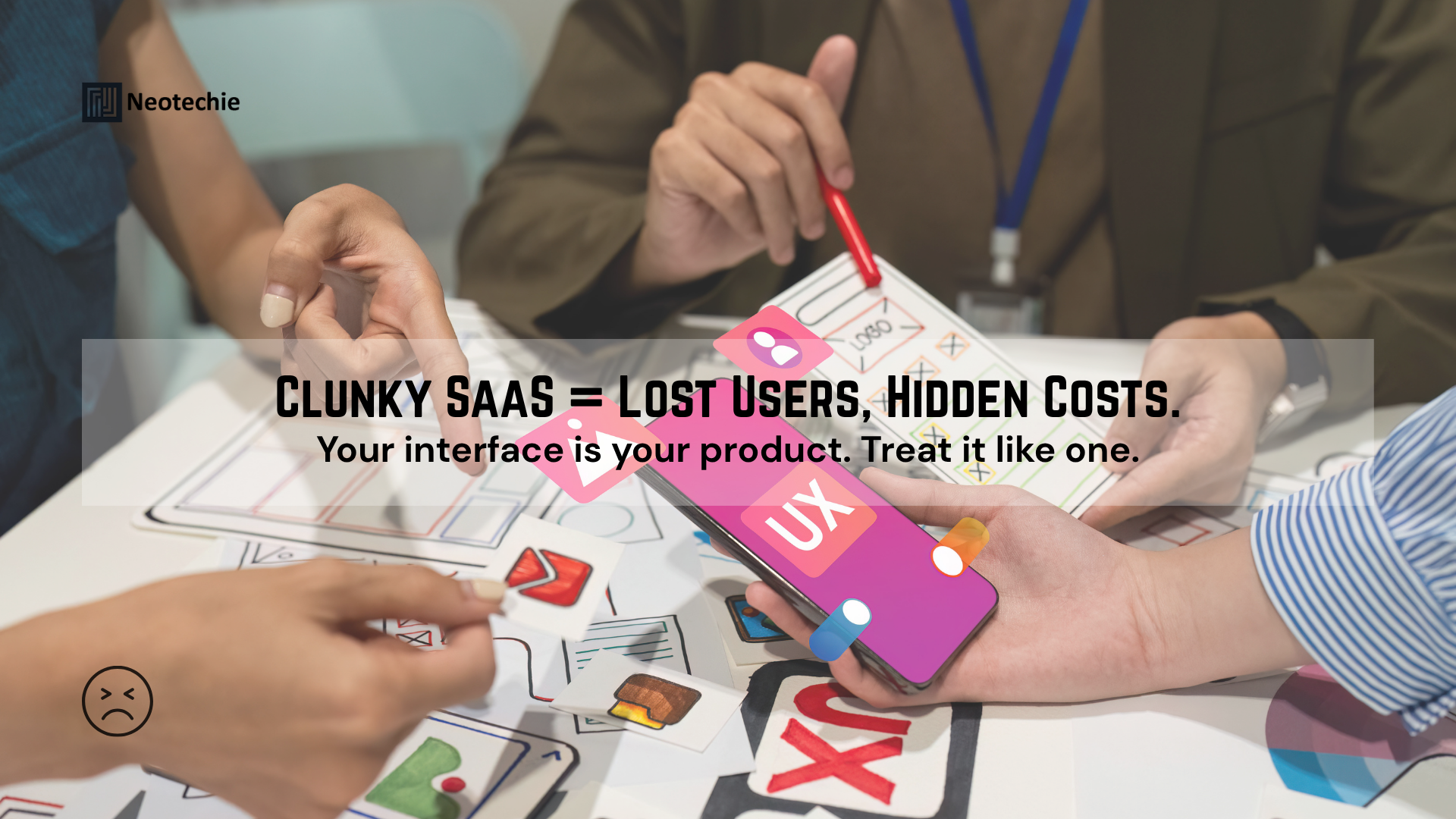The Hidden Costs of Clunky SaaS: Why User Experience Isn’t Optional Anymore
Software as a Service (SaaS) has become the backbone of modern business operations, streamlining everything from collaboration to customer engagement. Yet many organizations, in their race to implement powerful software, underestimate one of the most vital components of success: user experience (UX). A platform can be feature-rich, scalable, and secure—but if it’s frustrating or confusing to use, it becomes a burden rather than a solution.
This article dives into the often-overlooked costs of clunky UX in SaaS applications and why intuitive, seamless, and user-first design is no longer optional—it’s essential.
Clunky UX: A Silent Productivity Killer
Efficiency is the currency of modern business. Every second spent navigating a bloated interface or hunting for a buried feature chips away at productivity. SaaS platforms with poor UX often:
- Require excessive clicks to perform simple tasks
- Confuse users with unclear icons or workflows
- Interrupt momentum with inconsistent UI patterns
While these issues might seem minor in isolation, they compound dramatically at scale. A 30-second delay per user, repeated dozens of times per day across a team, results in significant productivity losses.
Research by Forrester shows that every dollar invested in UX returns up to $100. That’s a 9,900% ROI—highlighting how critical intuitive design truly is.
Poor UX doesn’t just slow work—it forces users to rely heavily on IT support for clarification, increasing internal friction and reducing overall efficiency.
Endless Training and Extended Onboarding
Complex software introduces longer onboarding and training timelines. For fast-growing startups and distributed teams, time is a premium. When platforms aren’t intuitive, businesses must:
- Allocate more time for employee training
- Create elaborate user manuals
- Assign mentors or superusers to assist others
This not only slows down team readiness but also raises the true cost of software adoption. What should be plug-and-play becomes a drawn-out, resource-heavy initiative.
Low Adoption, High Abandonment
You can’t force people to use a tool they don’t enjoy using. If a SaaS platform feels clunky, adoption rates will drop—regardless of its features. Employees often:
- Revert to outdated tools
- Avoid core functionalities
- Adopt unauthorized alternatives
This leads to fragmented tech stacks, duplicated efforts, and compliance issues. More critically, it drains ROI. Why invest in a platform your team doesn’t want to use?
Cognitive Load: The Hidden Mental Tax
Cognitive load refers to the mental effort required to operate software. Good UX reduces this by making features obvious and workflows intuitive. Clunky platforms increase cognitive load by:
- Requiring memorization of complex steps
- Presenting dense or disorganized layouts
- Offering poor feedback when users take actions
The result? Users get tired—not from their actual work, but from navigating the tool meant to make their job easier. Cognitive fatigue isn’t just inefficient—it’s demoralizing.
Errors, Mistakes, and Risky Workarounds
When software doesn’t guide users clearly, mistakes happen:
- Sending wrong files
- Inputting incorrect data
- Skipping required steps
Worse, users often invent workarounds to bypass confusing sections—leading to inconsistent processes and increased risk. These ad-hoc solutions are impossible to scale, hard to document, and can result in compliance breaches.
UX Affects Retention and Culture
Daily frustration with tools translates into broader dissatisfaction. When employees consistently struggle with software, it communicates a lack of care from leadership. This can:
- Decrease engagement
- Lower job satisfaction
- Contribute to employee churn
On the flip side, empowering teams with tools that “just work” sends a message: your time matters. This shift from tool friction to tool fluency helps foster a healthier work environment.
Poor UX Leads to Security Risks
Frustrated users don’t just quit—they improvise. Shadow IT—the use of unauthorized apps or cloud solutions—often stems from dissatisfaction with official tools.
Clunky SaaS experiences push users to:
- Export data to personal tools
- Use third-party platforms for convenience
- Ignore protocols that feel cumbersome
This creates major vulnerabilities in data governance and cybersecurity. Additionally, confusing interfaces can lead to users unintentionally sharing sensitive data or misconfiguring permissions.
Investing in UX Pays Off—Every Day
When SaaS is built with the user in mind, the transformation is immediate and measurable:
- Faster onboarding means quicker time-to-value
- Increased engagement leads to higher ROI
- Lower support needs reduce overhead
- Error reduction boosts reliability
- Satisfied users become your platform’s biggest advocates
UX is not just a design feature. It’s a strategic differentiator that determines whether your SaaS investment becomes a catalyst or a cost.
Neotechie: Elevating SaaS Through Purposeful UX Design
At Neotechie, we go beyond functionality to deliver cutting-edge SaaS applications that are as reliable as they are effortless to use. Our development philosophy places user experience at the core, ensuring that your software solutions are not only robust but intuitive.
We believe that enterprise-grade software shouldn’t require a manual. That’s why every product we craft is designed for immediate usability, empowering your team to focus on delivering results, not learning systems. With a clean, simple interface, seamless workflow integration, and top-tier data privacy and security baked into every feature, our SaaS platforms are built for real teams in real business environments.
Reliable. Intuitive. Secure. That’s SaaS by Neotechie.

